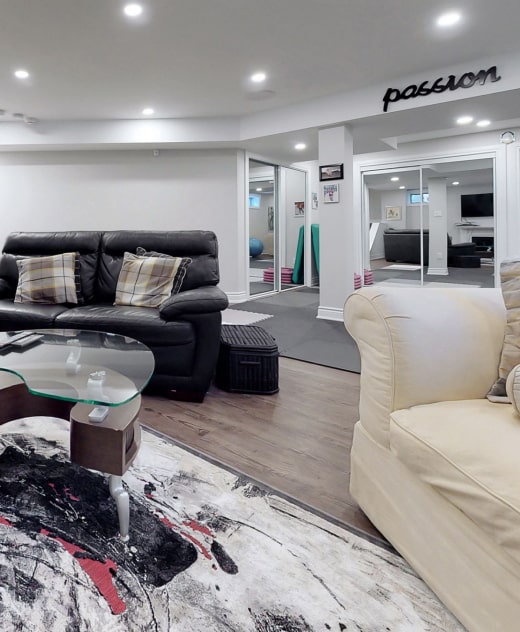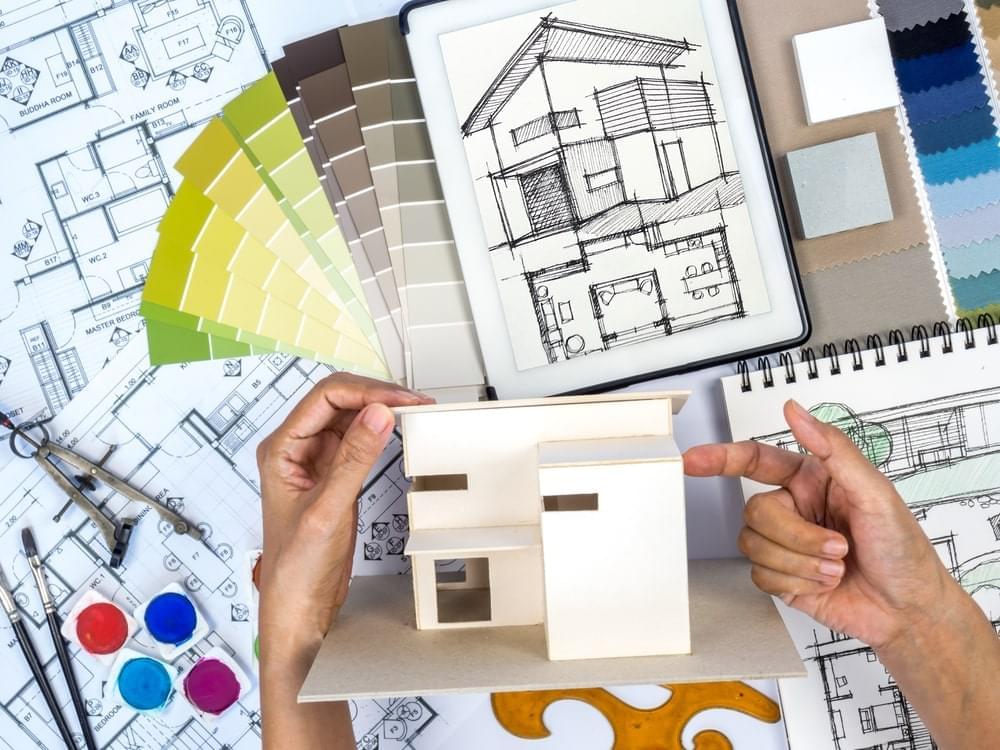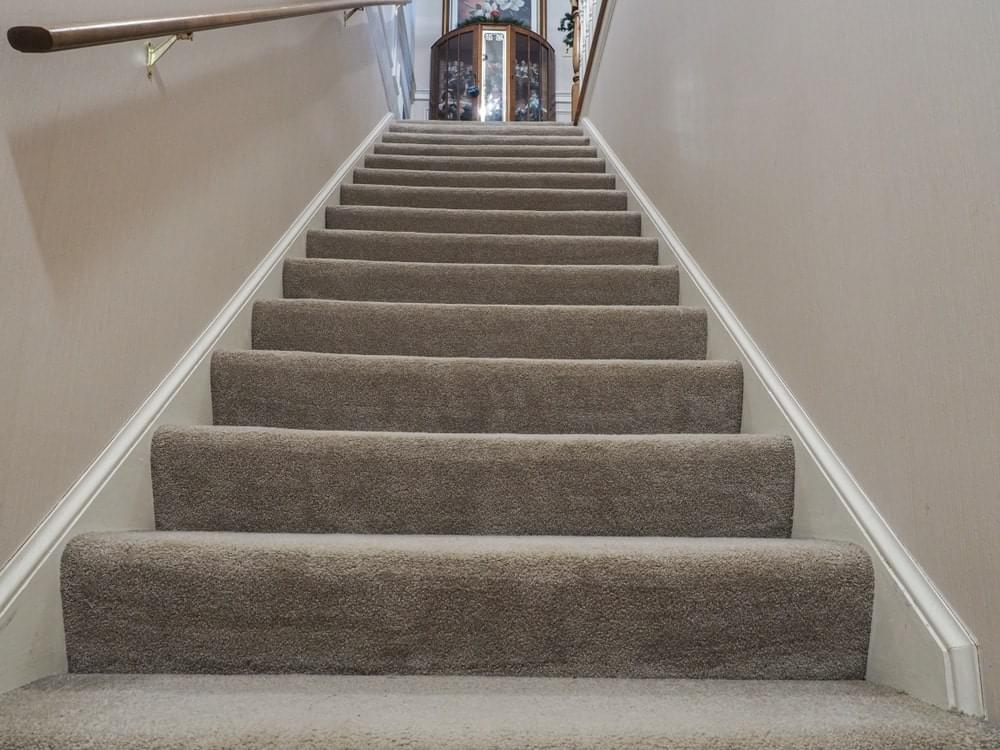Painting a Basement Floor
The basement of your house is an area that you can make very good use of if you will work on it appropriately. You can transform your basement into a living room, a gym, a relaxing place, or any other use you may want to put it to. All you need is to beautify it in accordance with what you want to use it for. As a guide, here are basement renovation ideas.
Painting your basement floor is a very easy and budget-friendly process that makes a significant improvement. It improves appearance, practicality and cleaning capabilities, improves durability, and may even prevent problems with high humidity or mould. There are paints designed specifically for concrete that will work best for most basement floors. For more information, call our company CSG Renovation and we will advise you and find the best options.
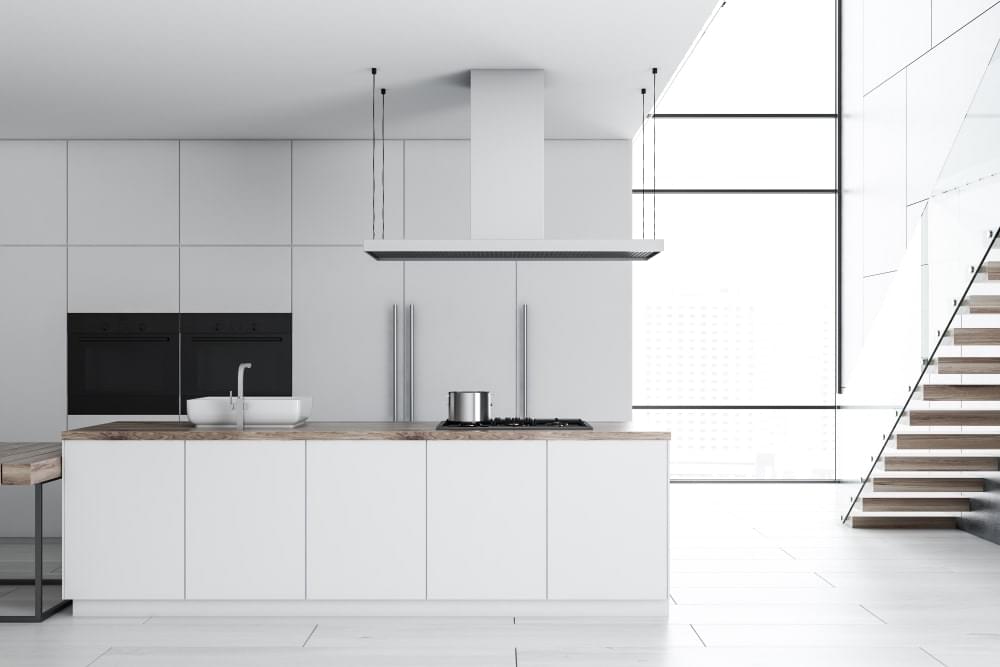
Mastery of Basement Preparation
As they say, to break the rules, you have to know them. The option that we give is the ideal option that takes into account all the nuances, all the consequences and all the 10 years of experience of our basement renovation team.
Let’s agree, we write the best way, you decide for yourself what risks you are ready to take and whether you are ready.
Materials for Painting the Basement Floor
- Paint primer
- Paint
- Plastic wrap
- Masking tape
- Degreasing solution
- Concrete patching compound
- Paintbrush
- Paint roller
- Mop
- Bucket
- Hoover
Surface Preparations
Proper surface preparation is critical to paint adhesion and durability. The fewer molecules that prevent the paint from adhering to the concrete, the better.
- Cracks: Seal cracks with concrete repair compound, let it dry and sand the joint to a smooth, even finish.
- Physical Cleaning: Remove all items from the basement or group them in one corner, pick up debris from the floor, sweep and vacuum dust and small debris.
- Chemical Cleaning: Remove grease and efflorescence (white mineral deposits) that may prevent paint from sticking.
- Checking for Moisture: Use a plastic sheet or moisture meter to make sure the floor is dry enough to apply the paint.
- Etching: If the floor is smooth, perform an acid etching or mechanical sanding, these will create a rougher texture which will increase adhesion.
- Priming: A concrete primer improves adhesion and prevents peeling or flaking over time.
- Seal: Put painter’s tape on the wall-floor border so you don’t accidentally stain it. If necessary, cover areas you don’t want to get dirty with cling film.
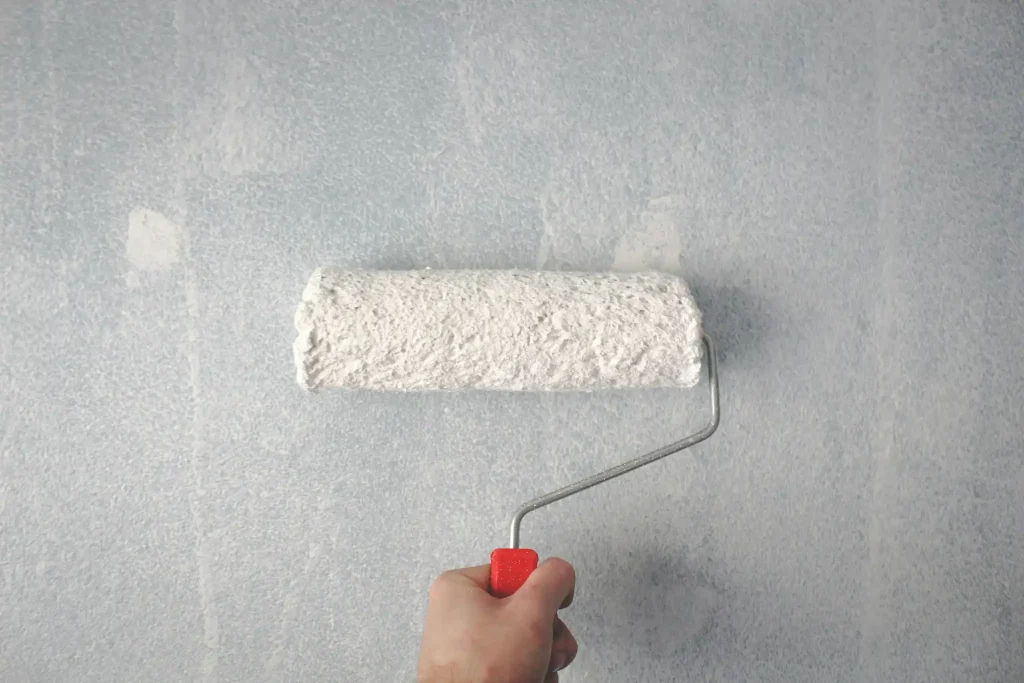
Steps to Painting a Basement Floor
- Applying primer. Use a brush to carefully paint the supports and edges of the room. Now use a roller to paint the floor. This layer should be even. Allow it to dry before you can start applying the finish coat. Read the full drying time on the packaging of your primer.
- Prepare the paint. If you’re using epoxy paint, it should be mixed from two ingredients according to the instructions. If you have ready-made paint, it should be pre-mixed by lifting the heavier particles from the bottom and spreading them evenly throughout.
- Paint application. Always start on the opposite side from the basement entrance. Again, start by painting the edges and supports, if any. Apply evenly in a thin layer, overlapping the previous roll of the roller to eliminate skips. Allow the layer to dry completely.
- Second coat. After the second coat, the colour of the floor will become uniform and the baldness of the first coat will be overlapped. If necessary, a third coat can be applied. In this case, follow the instructions on the paint packaging.
Application Techniques
Many homeowners make the mistake of applying paint too thickly or in a single coat to save time. The best approach is as follows:
Thin, even coats – applying several thin coats prevents bubbling and provides better adhesion and durability.
Roller and brush choice – using a long pile roller helps to spread the paint evenly, while a brush is essential for edges and corners.
Drying time – each coat must dry completely before applying the next, with epoxy paints often requiring a curing time of 24-72 hours.
There are decorative flakes and anti-slip additives and these can be added to the paint for aesthetics and increased safety.
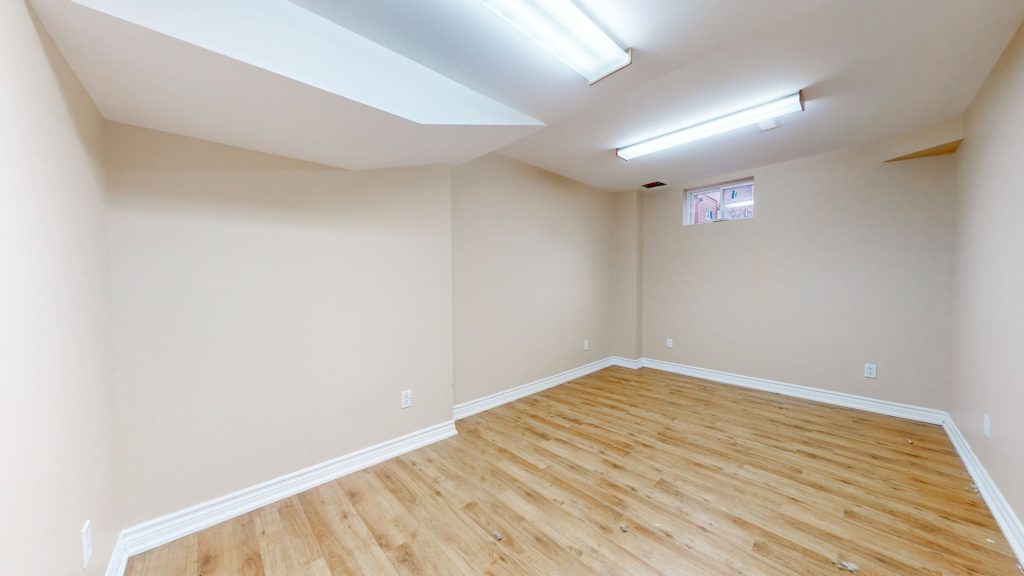
Unexpected Benefits of Basement Floor Painting
In addition to the expected improvements in appearance and durability, painting your basement floor offers a few less obvious benefits:
- Improved Indoor Air Quality: Sealing the concrete reduces the release of dust, which can contribute to allergies and respiratory problems.
- Improved Lighting: Light colours or glossy finishes reflect more light, making basements appear brighter and more attractive.
- Increased Property Value: Basement finishes can increase the market value of a home, attracting potential buyers who see a well-maintained home.
Final Words
Painting a basement is the most budget-friendly basement finishing option that you can even do yourself. In doing so, it creates an aesthetically pleasing look, improves functionality, and even improves indoor air quality scores.
If you need a hand with this in am, we welcome you as a customer at CSG Renovation, call for a free consultation (647) 428-0007. We work with all types of renovations and remodelling, including basement underpinning.

